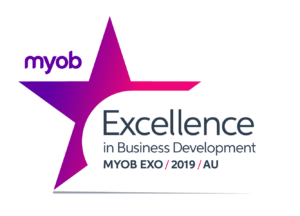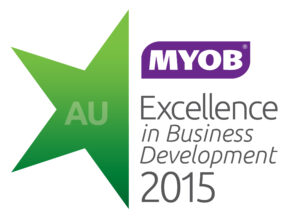The Art of Picking and Packing
Strategies to optimise your order fulfilment and warehouse efficiency.Successful order fulfilment extends beyond merely organising products on shelves. From the moment an order is received to the final delivery, the effectiveness of your picking and packing strategies can affect your reputation and bottom line. However, many businesses grapple with common challenges such as order errors, wasted time, and high labour costs. Scaling your warehouse operations to new heights relies on overcoming these challenges.
Picking and Packing Strategies
Each of the 4 strategies described below offers unique advantages depending on your specific business needs. In considering a Warehouse Management System (WMS), your software partner will help you to identify what strategy is best suited and configure the system for your particular business requirements.
1. Picking First, Packing Second
This strategy splits the picking and packing processes into separate tasks performed by different teams.
Advantages
This method introduces an additional layer of quality control, as the packing team double-checks the correctness of picked items. It also allows for a more focused and specialised approach to each task.
Disadvantages
The separation of tasks may increase the overall time required to fulfil an order, especially for smaller orders that could be picked and packed simultaneously.
When to use
This strategy is optimal when dealing with complex orders that include larger carton picks or multiple boxes. It is beneficial when the packing process requires careful planning to maximise pallet space or when an extra validation step is needed to ensure order accuracy.
2. Picking and Packing at the Same Time
This combined approach enables the handling of products only once, streamlining the order fulfilment process.
Advantages
This method reduces the number of steps in the order fulfilment process, leading to faster order processing times. By picking and packing at the same time, it is possible to optimise the layout of workstations and storage areas, potentially reducing the overall space needed for the fulfilment process.
Disadvantages
For highly complex or large orders, combining picking and packing tasks may lead to increased chances of errors and slowdowns in the fulfilment process. Large orders require larger containers or more cartons to successfully pack; transporting these through the warehouse to pick and pack at the same time may be impractical.
When to use
Ideal when building pallets or packing single boxes, especially when the accuracy of orders is ensured through real-time scanning or when the order size is generally small.
3. Wave Picking
Wave picking involves gathering all items needed for multiple orders in one pass through the warehouse. These items are then sent to a single point for packing and shipping.
Advantages
This method minimises the overall travel time and distance covered in the warehouse. Pickers can optimise their routes for multiple orders simultaneously, reducing floor congestion and improving efficiency. Separate picking/sorting will also provide additional built-in accuracy checks.
Disadvantages
Wave picking is very efficient for warehouse pathing and route optimisation but shifts the burden onto the packing team. Packers need to sort through the large wave pick to fill orders. This is made even more complicated and time-consuming if individual SKUs look similar and are mixed in together within the pick. There is also no way to prioritise orders within a wave. Wave picking requires a larger station and more resources dedicated to pack in a timely manner.
When to use
Best suited when dealing with easily identifiable products or when orders share common items, reducing the number of times a picker needs to visit the same location. Wave Picking prioritises picking efficiency, so this is helpful if your team has a larger packing team with plenty of stations and space.
4. Zone Picking
This method divides the warehouse into different zones with dedicated teams for each zone, minimising excessive picker movement.
Advantages
Zone-picking boosts productivity by reducing the total distance travelled by pickers. By specialising in specific areas, pickers become more familiar with their assigned zones, increasing speed and accuracy. Additionally, it can simplify training processes as each picker only needs to learn the layout and products of their specific zone.
Disadvantages
Zone picking involves multiple touchpoints where items are transferred between different zones. The complexity increases the likelihood of human errors, making it challenging to identify the source of an error when it occurs. Effective coordination between zone teams becomes essential to prevent inefficiencies, duplicated efforts, misplaced stock, or delays. This issue is compounded in complex warehouse layouts.
Another limitation of zone picking is that pickers have zone-based knowledge, making it difficult to cover other areas. This constraint can create scheduling challenges, especially when dealing with minimum staffing levels.
When to use
Zone picking is beneficial for larger warehouses or warehouses with specialised zones (such as temperature-controlled areas). It’s also useful when certain zones require specific machinery or equipment for picking, like a forklift or high-rise stock picker.
By understanding these strategies in detail and aligning them with your operational needs, you can significantly improve the efficiency and accuracy of your warehouse operations. The strategies mentioned here are a few examples, but there are numerous other approaches that could be more suitable for your unique operational needs and goals.
Empower Your Operations with the Right Technology
In addition to implementing the right picking and packing strategies, utilising the right Warehouse Management Software (WMS) can greatly amplify the effectiveness of your warehouse operations. A sophisticated WMS, such as eveXso, can offer several significant advantages when integrated with an MYOB ERP system:
Seamless Execution: Facilitates the smooth implementation of your chosen strategies, reducing operational complexities.
Enhanced Accuracy Through Scanning: Ensures the correct products are picked and packed for every order.
Increased Efficiency Through Automation: Reduces manual errors, minimises the time taken for task completion, and enhances overall operational speed.
Strategic Decision-Making: Considers your business’s unique needs, ensuring the most suitable strategy is used for each order.
It is worth taking the time to review your current picking and packing strategies to discover opportunities for improvement. Consider strategies you have not yet tried, which could bring significant efficiency gains. The right technology can also assist your organisation to implement these strategies effectively. WMS providers can help you make informed decisions about which strategies would work best for your business and work with you to redesign workflows for optimal efficiency.

eveXso brochure
Download nowBuild a smarter warehouse for better results
With customers expecting fast and accurate shipping, any bottleneck in your warehouse operations can lead to frustrating delays, disappointed customers, and reduced long-term revenue. Join our free webinar and discover how to build a smarter warehouse and improve customer satisfaction.
Discover strategies to maximise warehouse productivity
Achieving optimal warehouse efficiency in a period of market decline is paramount; any inefficiency directly impacts your customers and bottom line. Taking the steps to maximise productivity now will position your company for success when the market improves.
Watch the webinar recording to discover the strategies and processes to reduce errors, maximise productivity, and increase operational efficiency.
Kilimanjaro Consulting is the premier implementing partner of MYOB Advanced and MYOB Exo across Australia and New Zealand. We are experts at integrating third-party warehouse management solutions into your MYOB ERP to improve efficiency. To start a conversation about how to improve your warehouse management process, email samacs@kilimanjaro-consulting.com or call 1300 857 464 (AU) or 0800 436 774 (NZ).
























